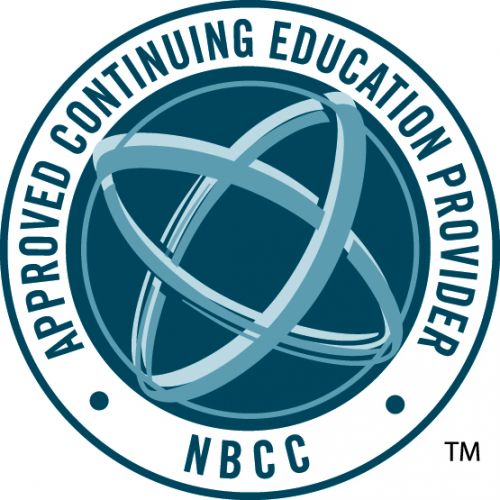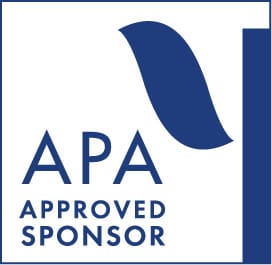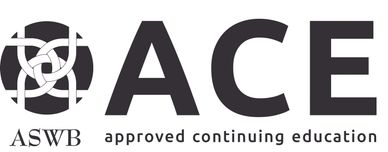Animal Assisted Therapy
Lois Jean Brady, MA, CCC-SLP, CAS
$29.00
 Introductory
Introductory
 Online
Online
Course Abstract
Animal Assisted Therapy is a 2-hour online continuing education (CE) course that provides information and techniques for working with animals to help clients meet their therapeutic goals.
In Animal-Assisted Therapy (AAT) the human-animal bond is utilized to reach individuals who are otherwise difficult to engage in therapy. AAT has been associated with improving outcomes in four areas: autism-spectrum symptoms, medical difficulties, behavioral challenges, and emotional well-being. At a fundamental level, pets can provide companionship, stress relief, emotional comfort, and a substitute for human company across age groups. Research shows that the beneficial effects of the human-pet interaction may include lower levels of depression, anxiety, and pain, as well as improved self-image, self-efficacy, mental function, and quality of life. By maintaining interest and attention, AAT works to support language and motor activities, encourages social interaction, provides sensory integration, and motivates students to do their best.
This course shares information on how to train and register in AAT with Pet Partners (an organization that helps people through positive interaction with animals) and is designed to provide therapists, educators, and caregivers the information and techniques needed to begin using the human-animal bond successfully to meet clients’ individual therapeutic goals.
Course # 21-53 | 2021 | 44 pages | 15 posttest questions
Learning Objectives
- Explain the four key features of animal assisted therapy
- Describe six special considerations for working with individuals with autism spectrum disorders
- Differentiate uses for AAT in speech-language pathology, occupational therapy, and mental health practice
- List five best practices relevant to AAT
- Identify five situations in which AAT may not be appropriate
- Specify eight ways to minimize risk in the practice of AAT
Course Directions
This online course provides instant access to the course materials (PDF download) and CE test. The course is text-based (reading) and the CE test is open-book (you can print the test to mark your answers on it while reading the course document).
Successful completion of this course involves passing an online test (80% required, 3 chances to take) and we ask that you also complete a brief course evaluation.
About the Author(s)
Lois Jean Brady, MA, CCC-SLP, CAS : Find out More
Lois Jean Brady, MA, CCC-SLP, CAS, is passionate about working with the special needs community. She found her calling while in high school, when she spent her summer breaks volunteering in camp programs for children with special needs. Lois has over two decades of experience working as a Speech-Language Pathologist specializing in autism spectrum disorder and is a Certified Autism Specialist. Educational accomplishments include a Master’s degree in Speech-Language Pathology, Certificate in Assistive Technology, Certificate in Computer Based Intervention and completion of an Animal Assisted Therapy Program.
Disclosure
Financial: No relevant financial relationship exists.
Nonfinancial: No relevant nonfinancial relationship exists.
CE Information
Counseling

Professional Development Resources (PDR) has been approved by the National Board for Certified Counselors (NBCC) as an Approved Continuing Education Provider, ACEP No. 5590. Programs that do not qualify for NBCC credit are clearly identified. PDR is solely responsible for all aspects of the programs.
Professional Development Resources is CE Broker compliant (#50-1635 - all courses are reported within two business days of completion). Professional Development Resources, Inc. is recognized by the New York State Education Department’s State Board for Mental Health Practitioners as an approved provider of continuing education for licensed mental health counselors (#MHC-0135 - Note: New York counselors will receive 2 continuing education credits for completing this self-study course).
Marriage and Family Therapy

Professional Development Resources is approved by the American Psychological Association (APA) to sponsor continuing education for psychologists. Professional Development Resources maintains responsibility for this program and its content. Professional Development Resources is also approved by the National Board of Certified Counselors (NBCC ACEP #5590); the Association of Social Work Boards (ASWB #1046, ACE Program); the New York State Education Department's State Board for Mental Health Practitioners as an approved provider of continuing education for licensed marriage and family therapists (#MFT-0100 - Note: New York MFTs will receive 2 continuing education credit(s) for completing this self-study course); the Texas Board of Examiners of Marriage and Family Therapists (#114); and is CE Broker compliant (#50-1635 - all courses are reported within two business days of completion).
Nutrition and Dietetics
Professional Development Resources is a CPE Accredited Provider with the Commission on Dietetic Registration (CDR #PR001). CPE accreditation does not constitute endorsement by CDR of provider programs or materials. Feedback for this activity can be sent directly to CDR. Professional Development Resources is also a provider with the Florida Council of Dietetics and Nutrition (#50-1635) and is CE Broker compliant (#50-1635 - all courses are reported within two business days of completion).
Download CDR's Critical Thinking Tool - CDR credentialed practitioners must complete and save this form and the certificate of completion should they ever be audited. Failure to include both certificate and completed tool will result in a failed audit and loss of CPE credit. Feedback about the quality of the activity can be sent directly to CDR: [email protected]
Psychology

Professional Development Resources is approved by the American Psychological Association (APA) to sponsor continuing education for psychologists. Professional Development Resources maintains responsibility for this program and its content.
Professional Development Resources is CE Broker compliant (#50-1635 - all courses are reported within two business days of completion). Professional Development Resources, Inc. is recognized by the New York State Education Department’s State Board for Psychology as an approved provider of continuing education for licensed psychologists (#PSY-0145).
School Psychology

Professional Development Resources is approved by the American Psychological Association (APA) to sponsor continuing education for psychologists. Professional Development Resources maintains responsibility for this program and its content.
Professional Development Resources is CE Broker compliant (#50-1635 - all courses are reported within two business days of completion). Professional Development Resources, Inc. is recognized by the New York State Education Department’s State Board for Psychology as an approved provider of continuing education for licensed psychologists (#PSY-0145).
Speech Language Pathology
Introductory Level | 0.2 ASHA CEUs | ASHA credit is available until 10/31/2026. ASHA CEUs are awarded by the ASHA CE Registry upon receipt of the monthly completion report from the ASHA Approved CE Provider (#AAUM5178). Please note that the date that appears on ASHA transcripts is the last day of the month in which the course was completed.
Professional Development Resources is CE Broker compliant (#50-1635 - all courses are reported within two business days of completion).
ASHA CE Provider approval and use of the Brand Block does not imply endorsement of course content, specific products, or clinical procedures.
Social Work

Professional Development Resources, #1046, is approved as an ACE provider to offer social work continuing education by the Association of Social Work Boards (ASWB) Approved Continuing Education (ACE) program. Regulatory boards are the final authority on courses accepted for continuing education credit. ACE provider approval period: 6/12/2025 - 6/12/2028. Social workers completing this course receive 2 clinical continuing education credits. ACE format: Reading-based asynchronous distance learning.
Professional Development Resources is CE Broker compliant (#50-1635 - all courses are reported within two business days of completion). Professional Development Resources, Inc. is recognized by the New York State Education Department's State Board for Social Work as an approved provider of continuing education for licensed social workers (#SW-0664 - Note: New York social workers will receive 2 continuing education credit(s) for completing this self-study course). Professional Development Resources is also approved by the Texas State Board of Social Worker Examiners (#5678).
Teaching
Professional Development Resources is approved by the American Psychological Association (APA) to sponsor continuing education for psychologists. Professional Development Resources maintains responsibility for all programs and content. Professional Development Resources is also approved by the National Board of Certified Counselors (NBCC ACEP #5590); the Association of Social Work Boards (ASWB Provider #1046, ACE Program); the Continuing Education Board of the American Speech-Language-Hearing Association (ASHA Provider #AAUM); the American Occupational Therapy Association (AOTA Provider #3159); the Commission on Dietetic Registration (CDR Prior Approval Program); the New York State Education Department’s State Board for Psychology as an approved provider of continuing education for licensed psychologists (#PSY-0145), State Board for Mental Health Practitioners as an approved provider of continuing education for licensed mental health counselors (#MHC-0135) and marriage and family therapists (#MFT-0100), and the State Board for Social Workers as an approved provider of continuing education for licensed social workers (#SW-0664); the Texas Board of Examiners of Marriage and Family Therapists (#114) and State Board of Social Worker Examiners (#5678); and is CE Broker compliant (#50-1635 - all courses are reported within two business days of completion).
Customer Testimonials
Great course! I feel it would be beneficial to my clients.
References were excellent.
Very good program Information was presented in an organized manner and was thorough on the topic of Animal Assisted Therapy. Thank you.
This course was informative. I am even more interested in providing AAT.
What a beneficial therapy for all involved. Thank you for a great and uplifting course!
More Testimonials
Well organized and informative, good case examples.
Loved this course! Learned so much and so enjoyable to read through ... thanks for offering!
Excellent!! Taking the 3 hour course next and hopefully building an ATT practice in my area.
The practical information was helpful. The theoretical and research background information at times overwhelmed the practical guidelines for incorporating animals into a therapeutic program. It would have been helpful to incorporate all of the practical guidelines into a concise section with reference links then to the supporting research for the practice. The cautions should be more prominently marked in the study materials.
Well put together. I've done AAT for years and this was a nice, explicit summary.
- ADHD
- Adults
- Alternative Medicine
- Alzheimers & Aging
- Animal-Assisted Therapy
- Autism
- Behavior Therapy
- Child & Adolescent
- Closeout
- Communication
- Couples-Family-Parenting
- Cultural Diversity
- Depression & Anxiety
- Domestic Violence
- Ethics & Risk Management
- Gender Identity
- HIV-AIDS
- Human Trafficking
- Laws & Rules
- Medical Errors
- Mindfulness & Yoga
- National Psychologist
- Nutrition & Fitness
- Psychotherapy
- Sexuality
- Substance Abuse
- Suicide
- Supervision
- Trauma & PTSD




